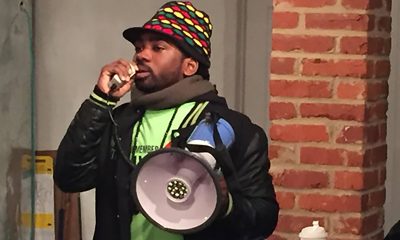Arts & Entertainment
Spotlight on Anacostia
Ward 8 arts initiative could be ‘transformational’ for neighborhood
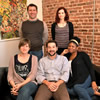
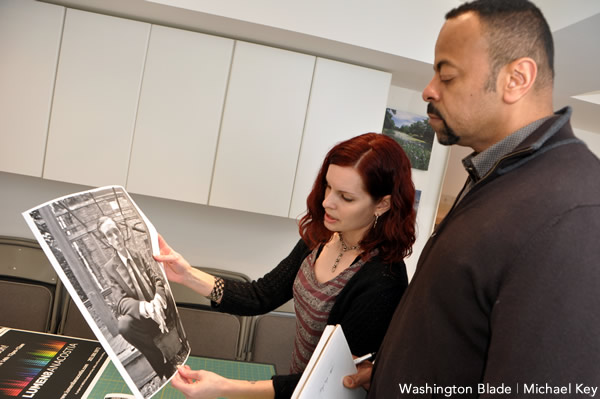
Andrea Hope and Tommie Adams look over prints he hopes to have exhibited in the Lumen8Anacostia festival in April. (Blade photo by Michael Key)
With the Smithsonian here and a host of other well-established galleries hosting exhibits — sometimes of national renown — it’s easy to get overlooked in the Washington art scene. But there’s a flourishing art community east of the Anacostia River, a handful of galleries and, come April, a bounty of opportunities for everyone to see them both in the established art houses there and in a bevy of abandoned buildings and warehouses.
Anacostia, just one of the Ward 8 D.C. Southeast neighborhoods east of the River, is changing. On April 14, residents there will launch Lumen8Anacostia, a three-month arts initiative that’s using a $250,000 grant the D.C. Office of Planning received from ArtPlace (a collaboration of nine of the country’s top foundations, eight federal agencies and six large banks that supports “creative placemaking” with grants and more) to be administered to four D.C. neighborhoods (the others are Brookland, Deanwood and the central 14th Street area N.W.) to create temporary art and culture spaces in “emerging” neighborhoods where vacant and/or underutilized storefronts and empty lots will be transformed into art knolls. Arch Development Corporation, which has been working since 1991 to revitalize historic Anacostia with several initiatives and economic development plans, is implementing Lumen8.
Though not an LGBT-specific initiative, one of the organizers, Jeffrey Herrell, is gay and his partner, Tommie Adams, is hoping to have his photography exhibited in one of the spaces. They moved to Anacostia in 2005, delighted at the amount of house and yard they could get for a fraction of the price they would have paid in Washington’s glitzier neighborhoods. Herrell says they love the neighborhood and are delighted to see its cultural side being tapped.
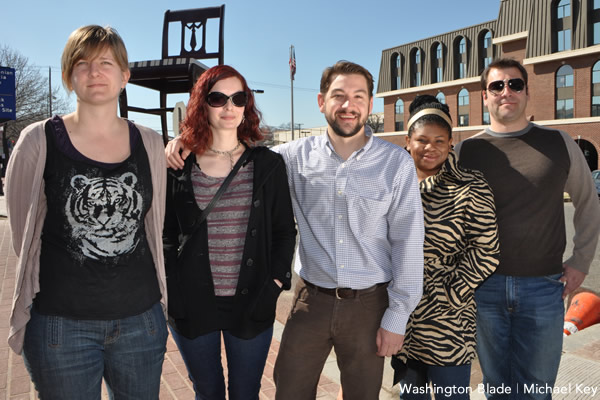
Lumen8 organizers from left are Beth Ferraro, Andrea Hope, Jeffrey Herrell, Nikki Peele and Phil Hutinet. (Blade photo by Michael Key)
“I’m a big ambassador for Anacostia,” Herrell says. “I’m always trying to get my friends to move here and I’ve succeeded a few times. I have great neighbors here. Yes, there have been some ups and downs … but I think [the neighborhood] has been stigmatized. … The neighbors are extremely close, really tight in terms of friendships and the neighborhood kind of brings you together. I really like living here.”
Herrell says he knows two artists who live on his street and has another neighbor who’s an actor/performance artist. His next-door neighbor is also gay, there’s a lesbian couple on his block and another he knows of a couple blocks over. He and Adams say gays in Dupont and Logan would be surprised to discover how easygoing most straight Anacostia residents are with their LGBT neighbors.
“People here really don’t care,” Adams says. “Sometimes the kids will say something at first, but people here don’t really care if there are differences. I guess they have worse issues to deal with.”
Anacostia does, of course, have its problems. About 94 percent black (Ward 7 is 96 percent), Ward 8 residents are plagued with the city’s highest unemployment rate — 35 percent according to the latest figures available from NeighborhoodInfo D.C., a partnership between the Urban Institute and the Washington D.C. Local Initiatives Support Corporation — and 20 violent crimes per 1,000 residents in 2010. Both, sadly, are the highest rates of D.C.’s eight wards (Ward 7’s unemployment rate is 19 percent for those 16 and older; Ward 3 has the lowest with just 3.4 percent of its 16-and-older residents out of work).
But those figures are part of the reason Lumen8 organizers say Anacostia needs some light, quite literally. In addition to the various exhibits planned, organizers plan to illuminate several Anacostia buildings for the festival. A portion of the grant money will go to Intelligent Lighting Company, which will project lights and images on several buildings there.
“We’re lighting it up literally as well as trying to shine an overall spotlight on the neighborhood,” Herrell says.
“So few people really know the location, they think Anacostia is everything east of the river,” says Nikki Peele, an Arch employee who lives in Congress Heights, another Ward 8 neighborhood. “Even lifelong D.C. residents sometimes think that. They’re not sure of the history here, what’s here to do. For too many people, the information they have is that this is a somewhat scary place, so for a project like this, especially on this scale, it has the opportunity to be a transformational moment and not just for the community but for the outside perception of it … it’s very much a family community with an almost village-like feel. … the name was chosen for a reason — to bring both light and understanding.”
Organizers are selecting artists to have their work shown now from a pool of about 20 applicants who heard about the event through neighborhood listserves and word of mouth. After the April 14 kickoff, exhibitors will have to agree to have their gallery spaces open each Saturday and then six hours on another day during the week for the rest of April, May and June. Aside from the neighborhood’s existing three galleries, space such as a former police warehouse and several vacant storefronts on Martin Luther King Avenue and Good Hope Road will be converted into temporary exhibition space. Portions of the funds from the grant will be used to convert the various spaces and to give to the artists to realize their visions for their exhibits.
Herrell says it’s a good opportunity for both D.C. residents in general and also for the Anacostia artists, most amateurs, who’ve never had their work exhibited before.
“They may not be able to afford to open their own store, but this will give them a taste of what it’s like,” he says.
“It’s a very large-scale project,” says Phil Hutinet, Arch’s chief operating officer. “It’s going to be a huge benefit to the artistic community and to the neighborhood.”
Television
ICYMI: ‘Overcompensating’ a surprisingly sweet queer treat
A sweet, savvy show about breaking free to embrace your true self
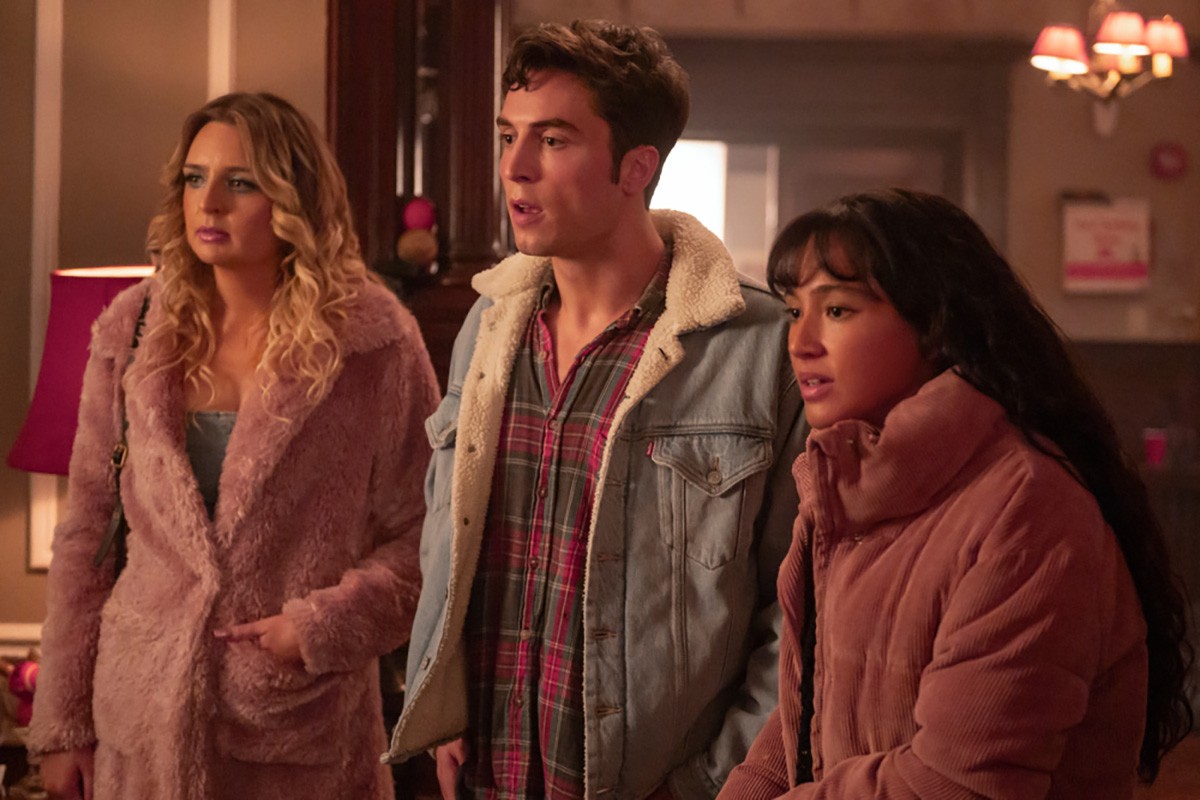
Pride month 2025 is now behind us, and while it’s safe to say that this year’s celebrations had a darker edge than usual, it’s also true that they came with a particularly rich bounty of new queer movies and shows to entertain us – so many, in fact, that even if we are facing a lull until the fall another harvest of fresh content, there are still plenty of titles – which, for whatever reason, were off your radar – for you to catch up on in the meantime.
One of the most notable of these – the bingeworthy series “Overcompensating” (now streaming on Amazon Prime) – will most definitely have been ON the radar for the plentiful fans of creator and star Benito Skinner, the actor/comedian who rose to viral fame through his content on platforms like Instagram, YouTube, and TikTok. For anyone else, it might have easily slipped through the cracks.
Created and written by Skinner as a loosely autobiographical “college comedy,” it aims for the kind of raucous, explicitly sexed-up tone one expects from the genre as it centers on Benny (Skinner), newly arrived as a freshman at prestigious Yates University. A former football jock and “golden boy” at his midwestern high school, he’s the picture of idealized youthful masculinity; he’s also deep in the closet, struggling to keep his sexuality hidden and maintain his macho front under the intense scrutiny of the college’s social scene – and under the resentful eye of his older sister Grace (Mary Beth Barone), who has already secured her own place at the top of the pecking order.
In the first episode, Benny’s difficulties are eased when he meets Carmen (Wally Baram), another freshman trying to navigate the politics of college life; a gamer from a home marred by tragedy, she’s an outsider who feels like she’s putting on an act, too, and they click – giving him the convenient “cover” of female companionship while providing them both with much-needed support and encouragement. He’s also befriended by a handsome film major from England (Rish Shah), who has already caught his eye, stirring other kinds of feelings and possibly even reciprocating them. Meanwhile, he’s being courted by the school’s “exclusive secret society” – headed by his sister’s aggressively “alpha” boyfriend Pete (Adam DiMarco) – and trying to stay interested in his studies, despite a growing realization that a career in business doesn’t actually appeal to him all that much.
That’s a lot to juggle for anybody, even an overachiever like Benny – whose “lucky” life so far has largely been the result of playing a role he is finding harder and harder to maintain. As the series goes on through its eight-episode arc, it becomes clear that he’s not the only one who is “keeping up appearances,” and he, along with the other confused and damaged young people in his orbit, begins the painful (but often hilarious) process of evolution that is required in order to become truly oneself.
Directed toward appealing to a younger demographic, “Overcompensating” is the kind of show that requires a few episodes worth of invested time to make an impression that feels like substance. Full of the bawdy farcical antics that go hand in hand with stories about hormonally charged college kids, it’s not above leaning into the formulas and tropes that have always driven these kinds of comedies. At first, while its broadly comedic strokes and frequently explicit sexual hijinks might elicit plenty of chuckles, the show might easily feel tiresome for more mature audiences; there’s a nostalgic fun to it, made even more appealing, somehow, by the “political incorrectness” of its frequently sexist and homophobic humor, but for a while things may feel like an unnecessary attempt to reinvent “Animal House” for the Gen Z crowd.
By the time the season reaches its halfway point, however, things have started to get real. The antics of these horny almost-adults take on a more pointed absurdity, informed by the increasingly tangled web of defensive deceit they weave among themselves – and, as things draw toward a cliffhanger climax, the consequences of maintaining it – until it achieves a sense of empathy toward them all. There’s a wisdom that smacks of lived authenticity underlying the whole affair, transforming it from the “sexploitative” teen comedy of its surface into something deeper. To be sure, things stay expectedly wacky, and the soap-operatic melodrama of its twists and reversals continue to maintain the show’s “mature YA” appeal; but beneath those trappings, by the end of the season a truer identity has begun to emerge, just as its characters have begun to find their own levels of self-actualization for themselves.
As creator, primary writer, and star, it’s obviously Skinner who deserves much of the credit. While it might be tempting, early on, to dismiss the show as an “ego project,” the internet-spawned sensation proves his talents quickly enough to get past such judgy suspicions, delivering a pitch-perfect blend of sauciness and sensitivity that extends its appeal toward both ends of the taste spectrum; just as crucially, he brings the same aforementioned “lived authenticity” to his winning performance – after all, he’s essentially playing himself in a fictionalized version of his own life – while also making sure that equal time (and compassion) is afforded all the other characters around him, each of whom are pushing at the boundaries of their own respective “closets,” too. It’s unavoidable to notice that – like most of his co-stars – he’s plainly a decade too old to be playing a college student; but by the time we reach that crucial halfway turning point, we’ve become too engaged by him to care.
The show is full of excellent performances, in fact. Relative newcomers Baram and Barone offer layers of complex nuance, while the more familiar DiMarco (“White Lotus”) is close to heartbreaking as the toxic BMOC clinging to the illusion of power as his life begins unraveling around him. Other standouts include the mononymic actress Holmes as Carmen’s “wild child” roommate, solidly likable turns as Benny’s parents from mature veterans Connie Britten and Kyle MacLachlan (whose presence, along with stylish elements in several key scenes, hints at an homage-ish nod to the late David Lynch), and podcaster Owen Thiele as an openly gay fellow student who has Benny “clocked” from the moment they meet. Finally, Lukas Gage makes a deep impression as a former high school teammate at the heart of Benny’s most haunting memory.
There’s no official word yet on whether “Overcompensating” will be renewed for a second season, despite the multiple loose ends left dangling at the end of its first; it has proven to be popular, and Skinner’s large fanbase makes it likely that the story will continue. Even if it doesn’t, the place of uncertainty in which it has left its characters rings true enough to serve as a satisfying endpoint.
As for us, we hope that won’t happen. For all its sophomoric humor, generic plot twists, and purposefully gratuitous sexual titillation, it’s one of the sweetest, kindest, and most savvy shows we’ve seen about breaking free from conformity to embrace your true self – and that’s a message that applies whether you’re queer, straight, or anywhere in between.
Photos
PHOTOS: Independence Day Weekend in Rehoboth
Wicked Green Pool Party, fireworks among festivities
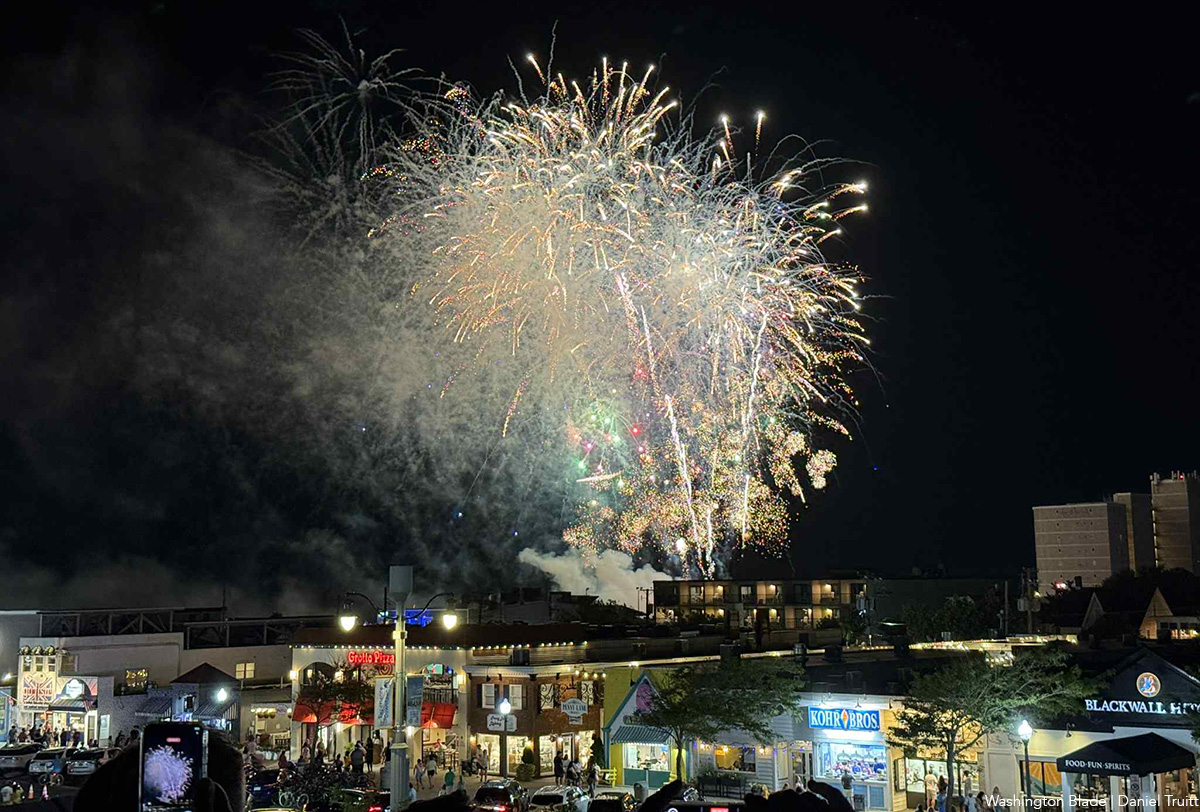
Vacationers and residents alike enjoyed Independence Day Weekend activities in Rehoboth Beach, Del. The Wicked Green Pool Party drew hundreds to the CAMP Rehoboth fundraiser on Saturday. That evening, revelers went to the rooftops to watch the fireworks display.
(Washington Blade photos by Daniel Truitt)
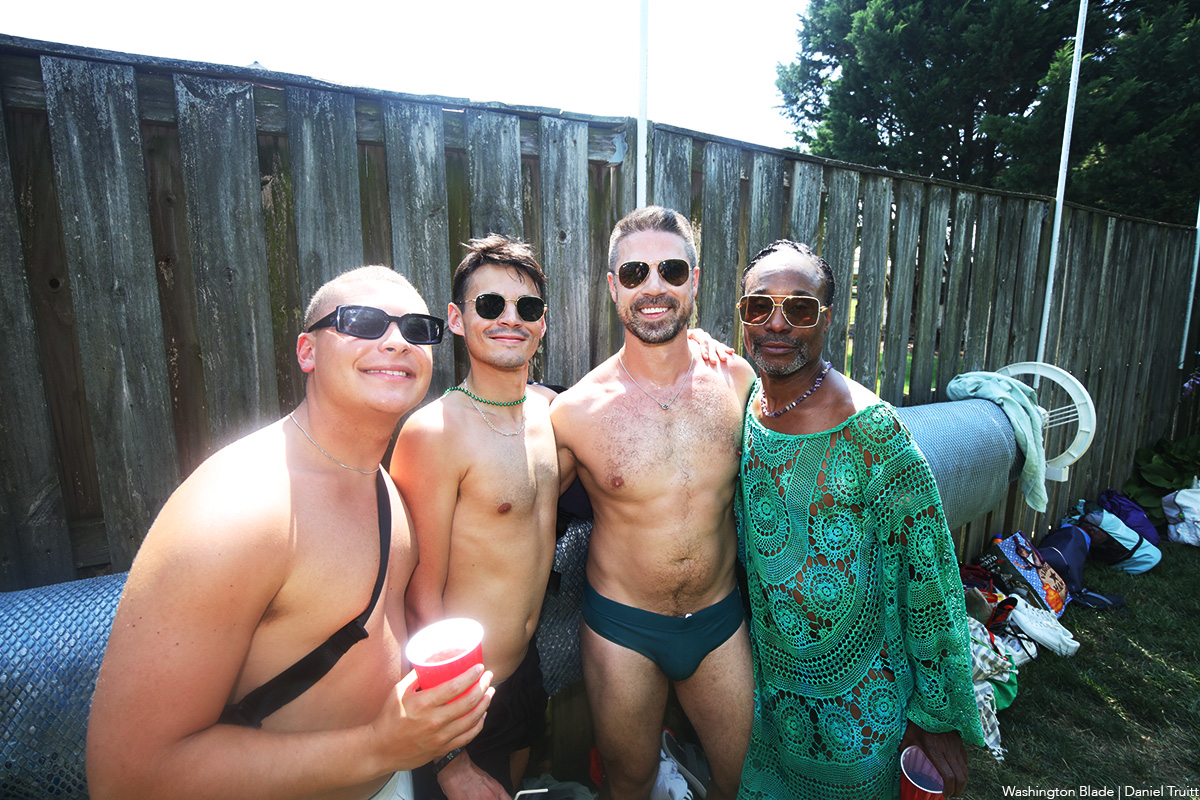
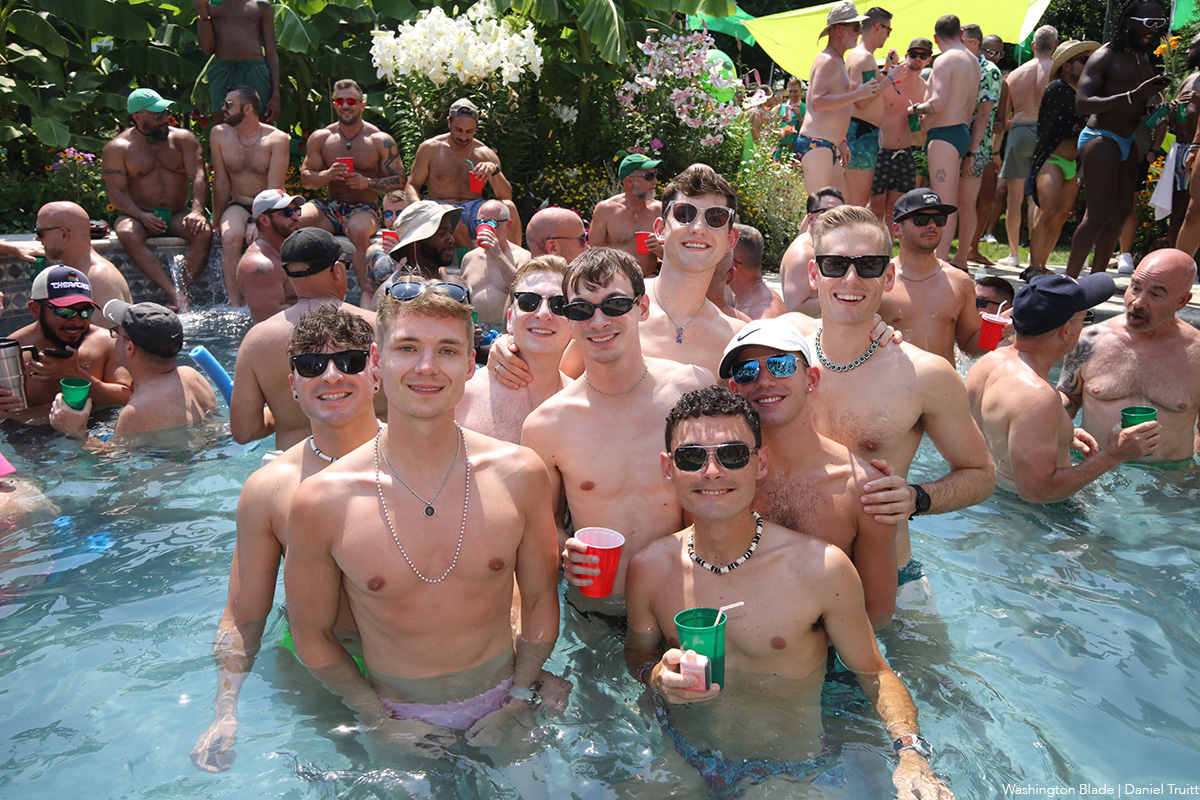
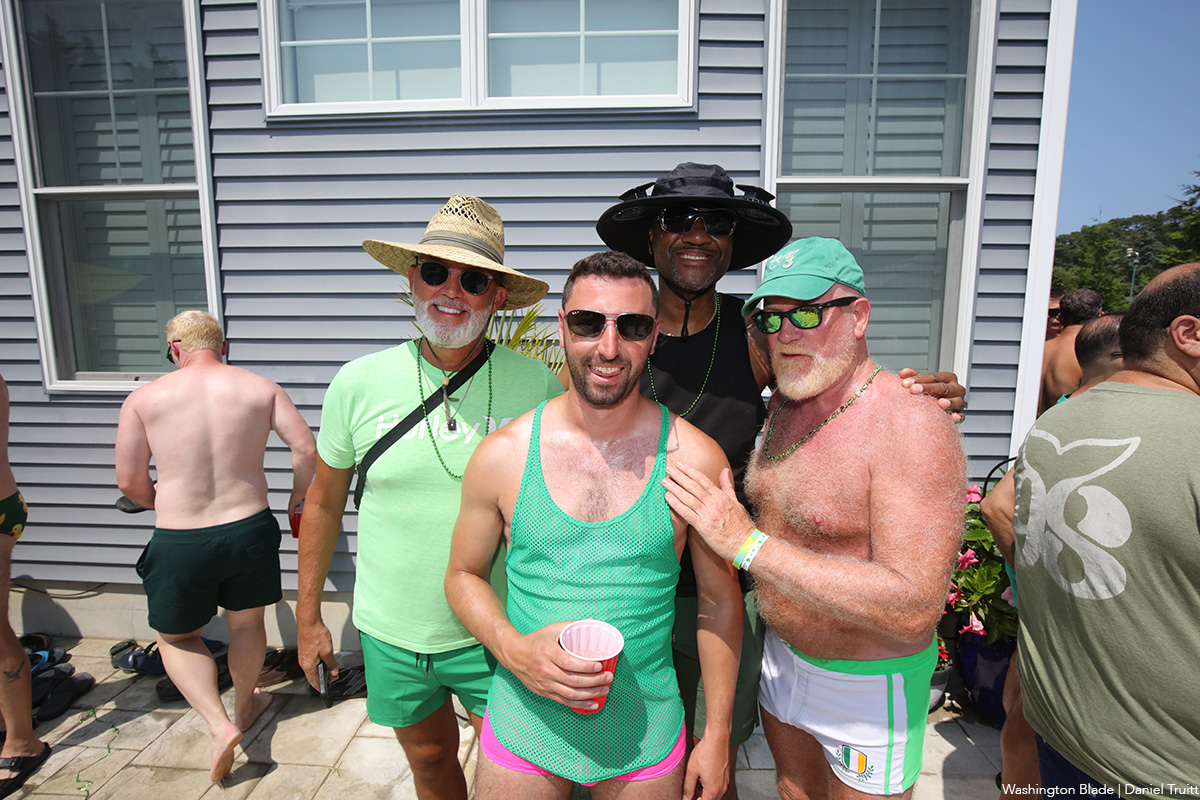
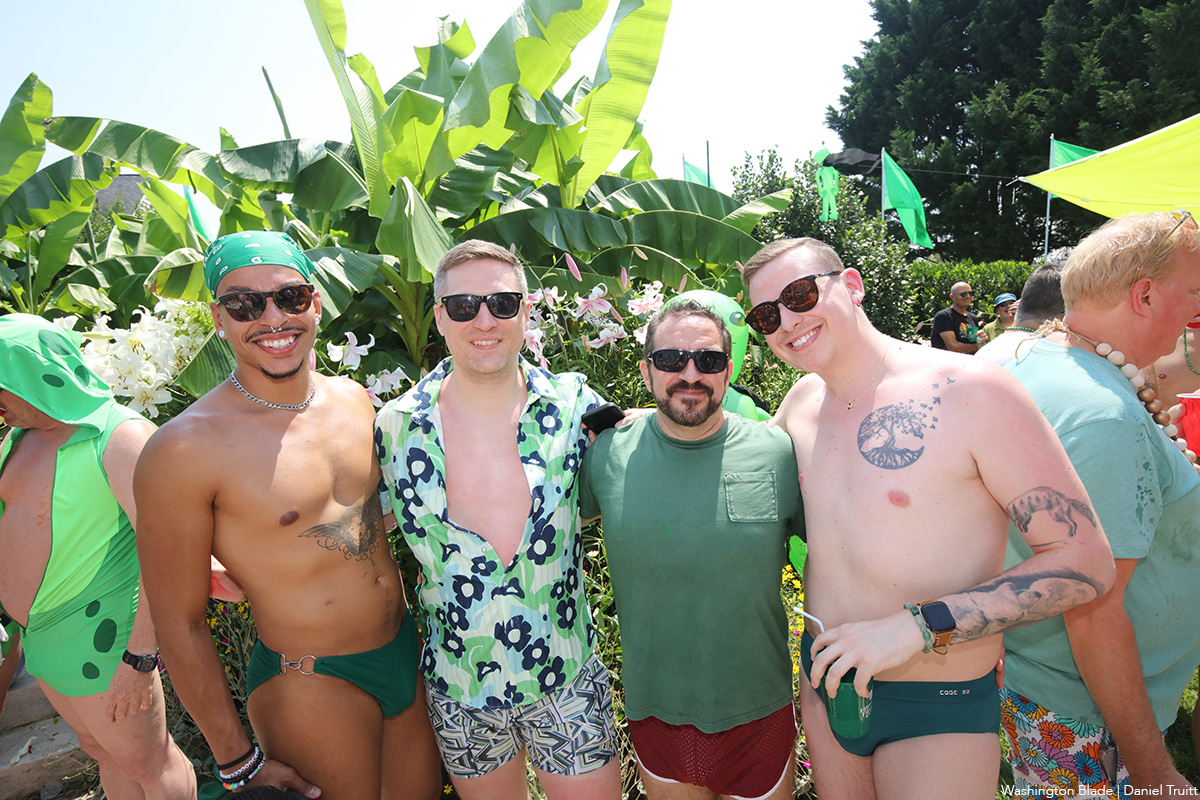
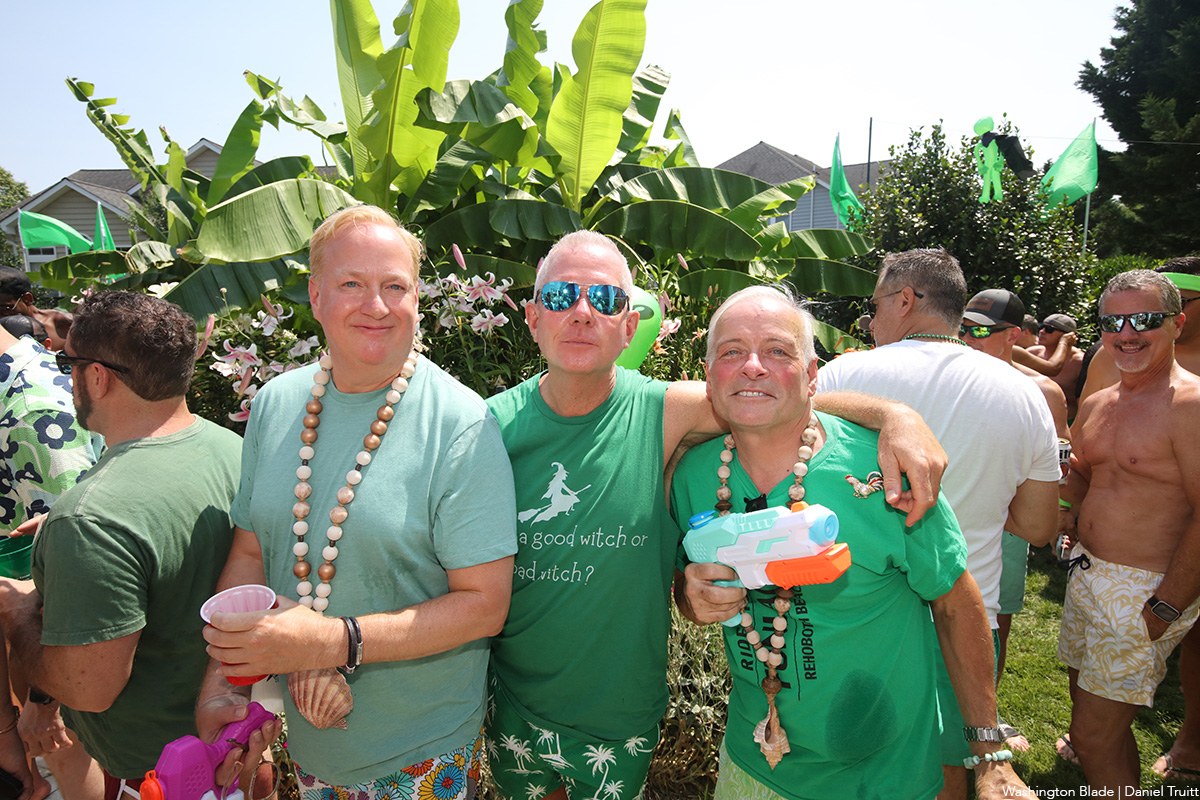
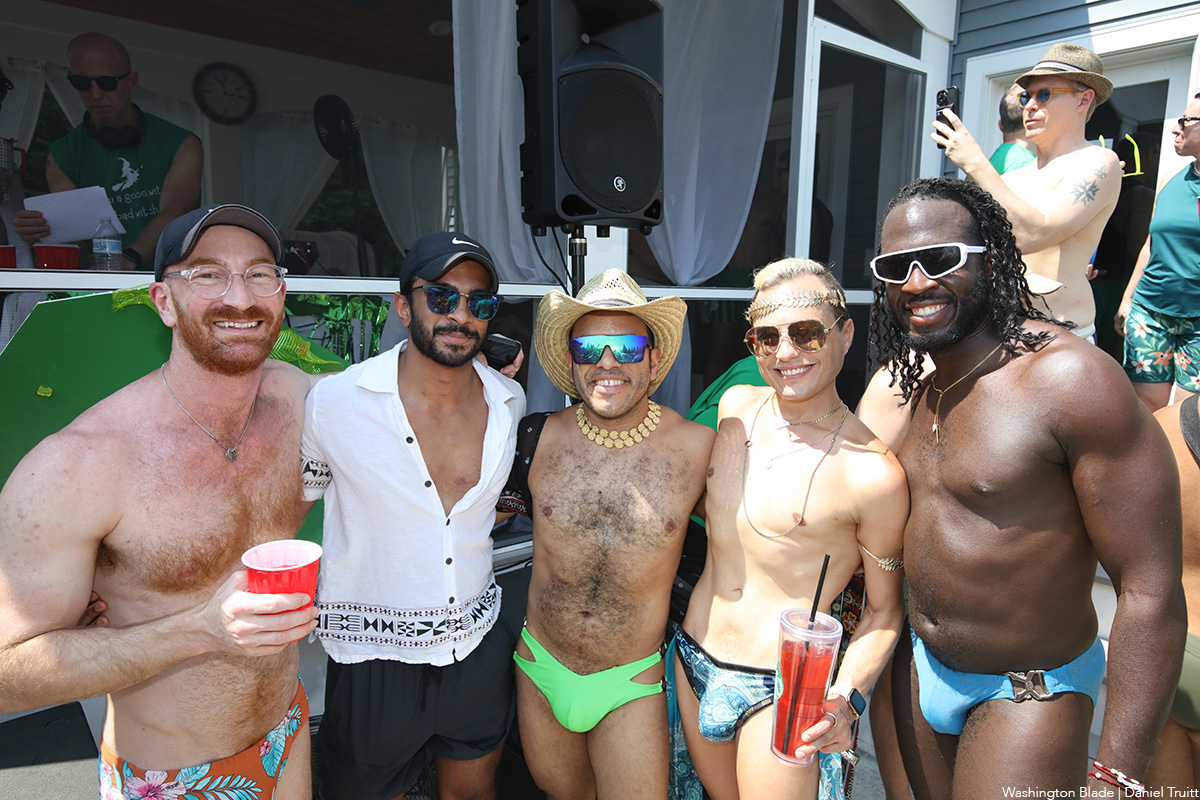
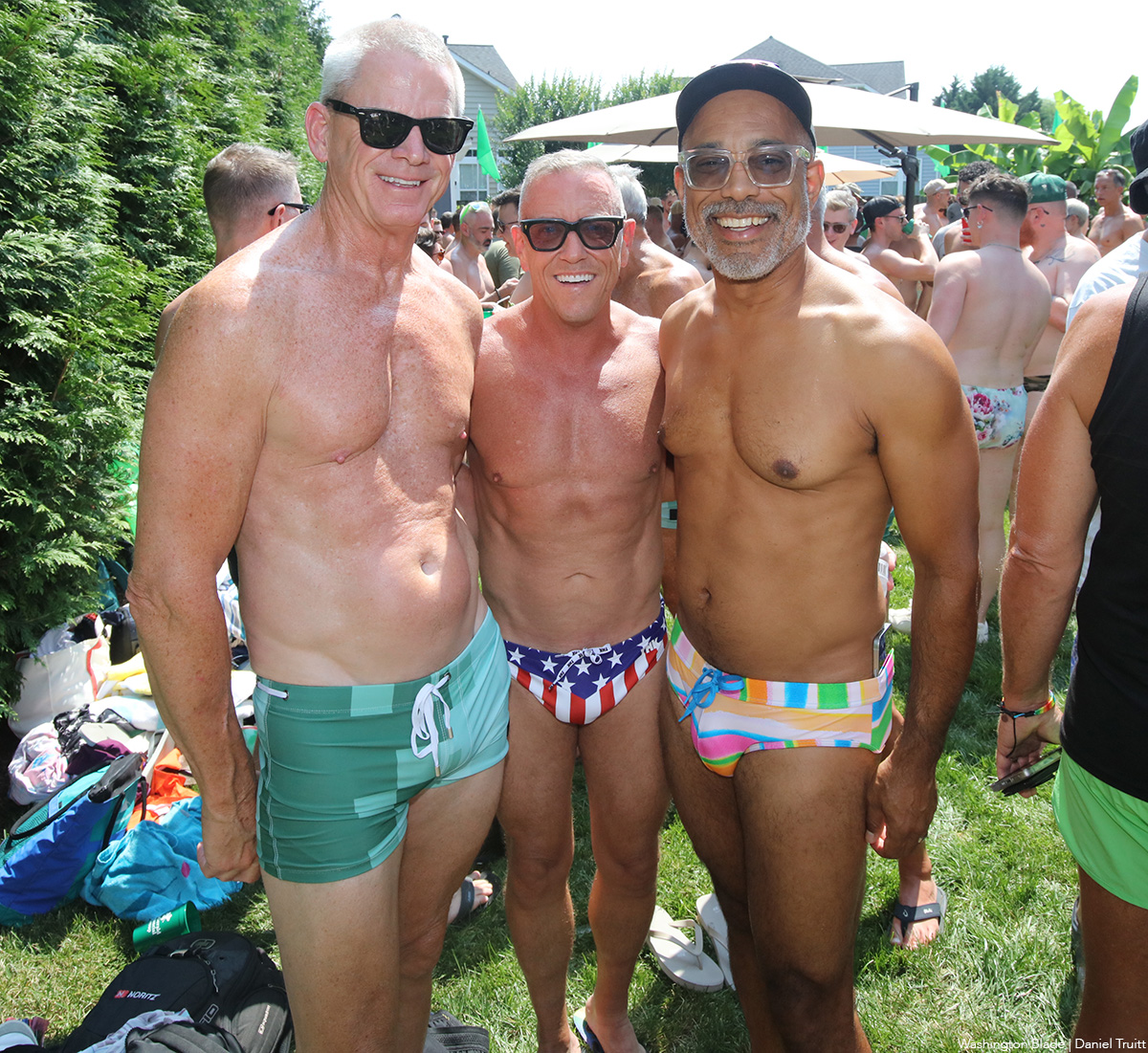
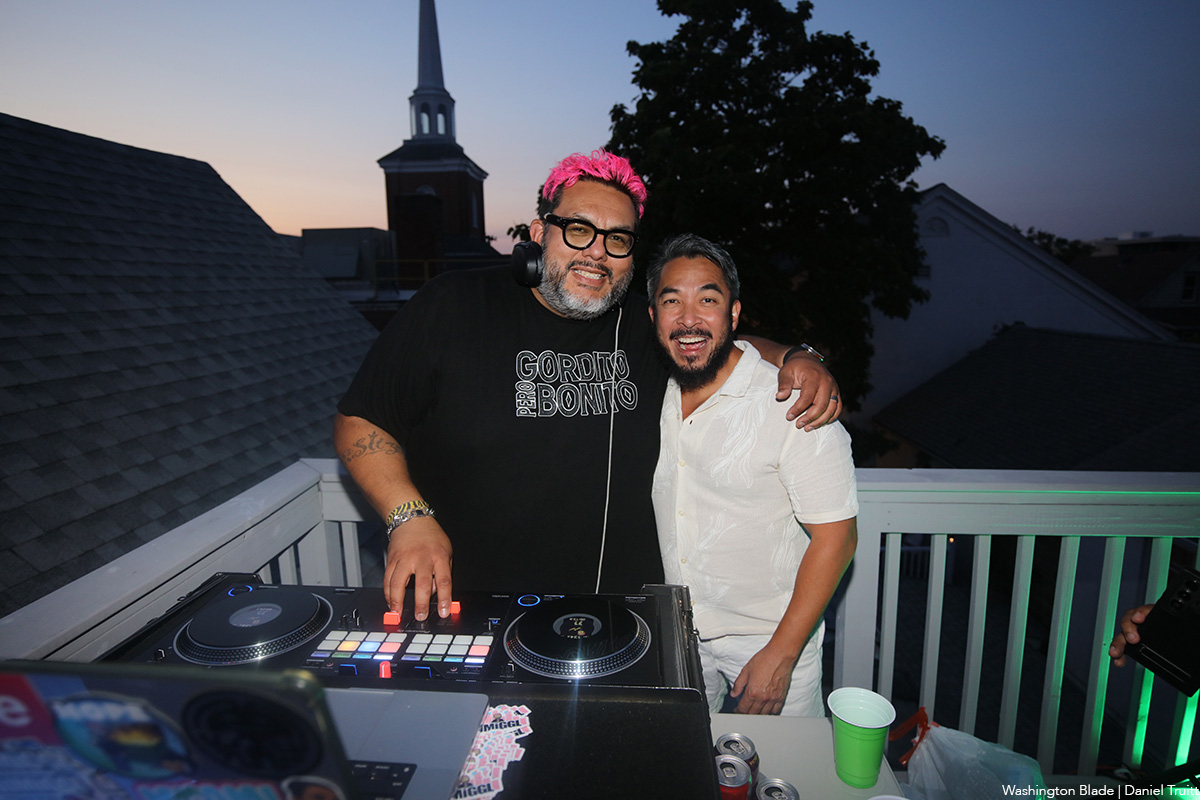
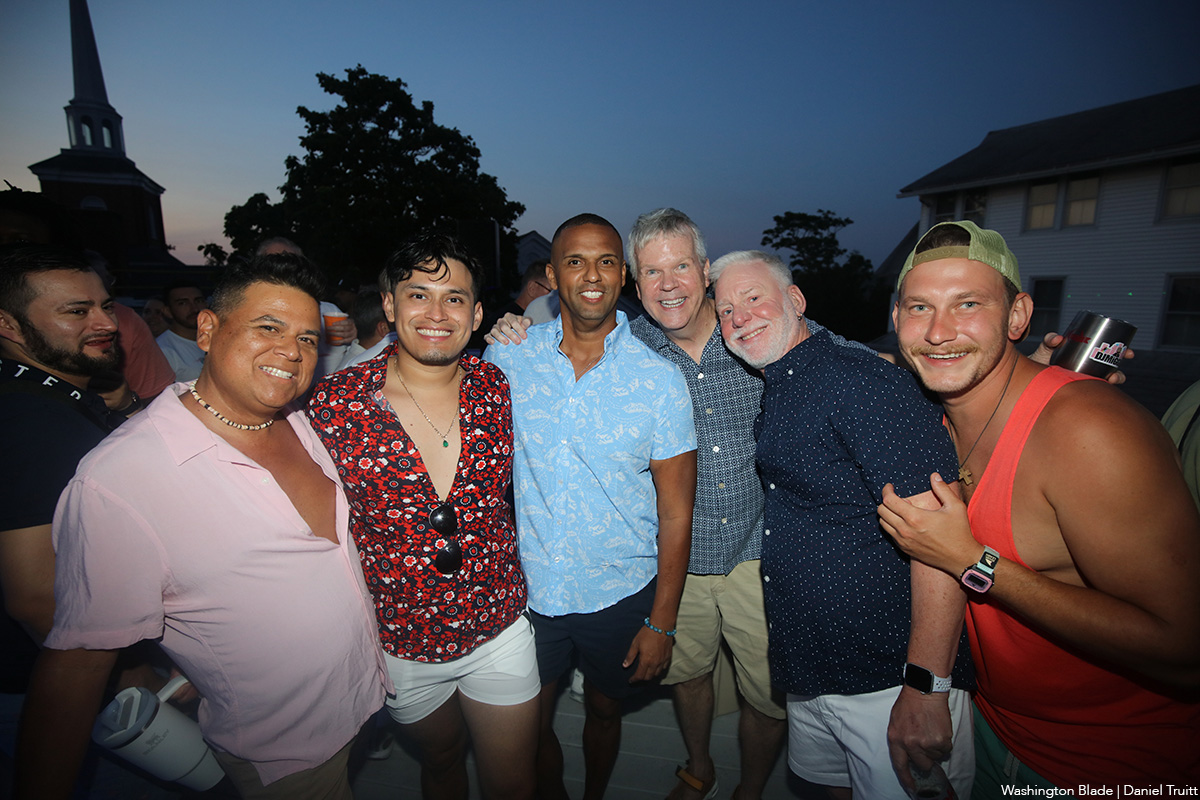
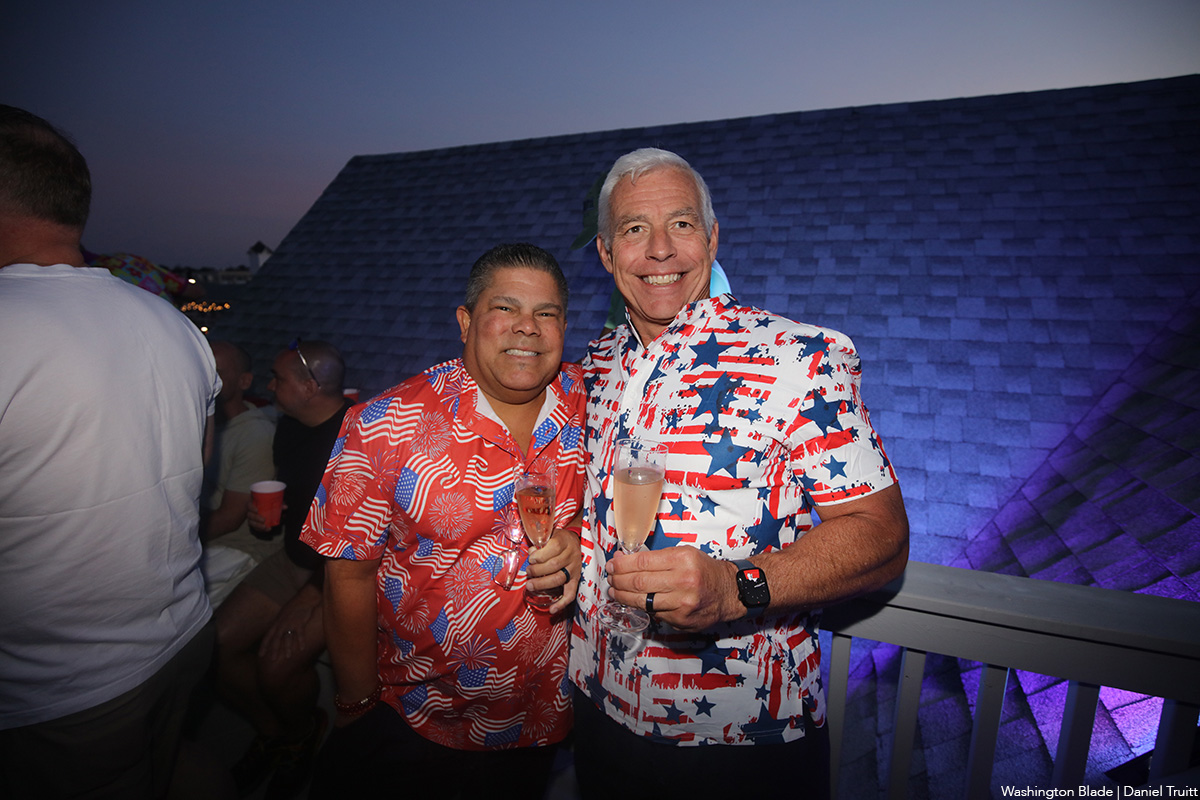
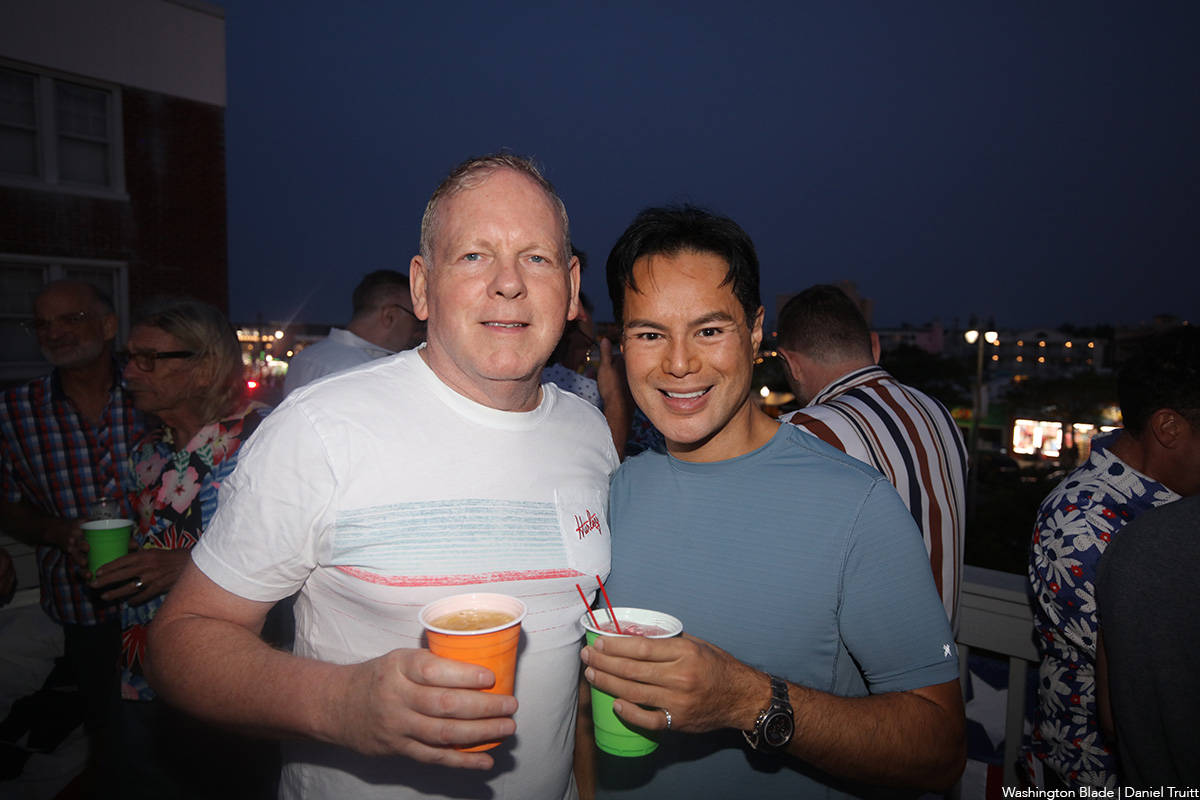
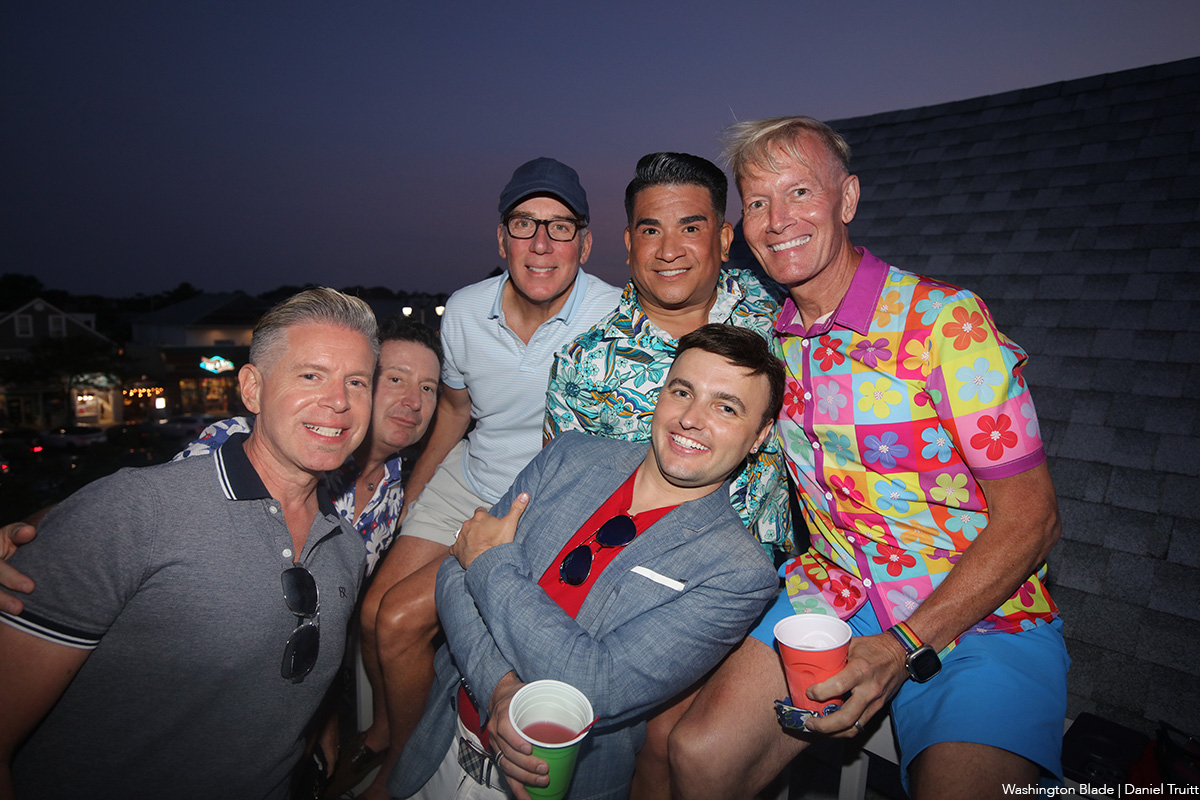
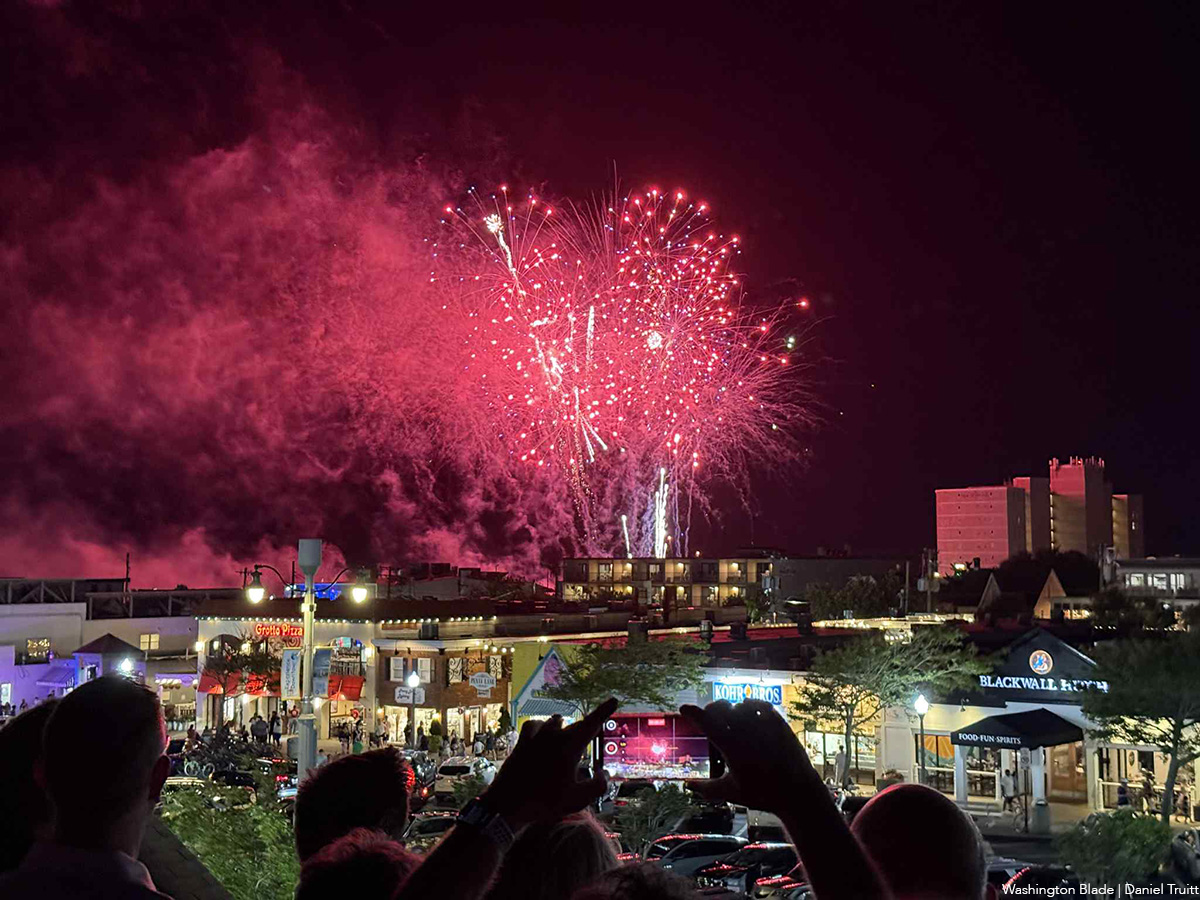
Music & Concerts
Red, White, and Beyoncé: Queen Bey takes Cowboy Carter to D.C. for the Fourth of July
The legendary music icon performed on July 4 and 7 to a nearly sold-out Northwest Stadium.
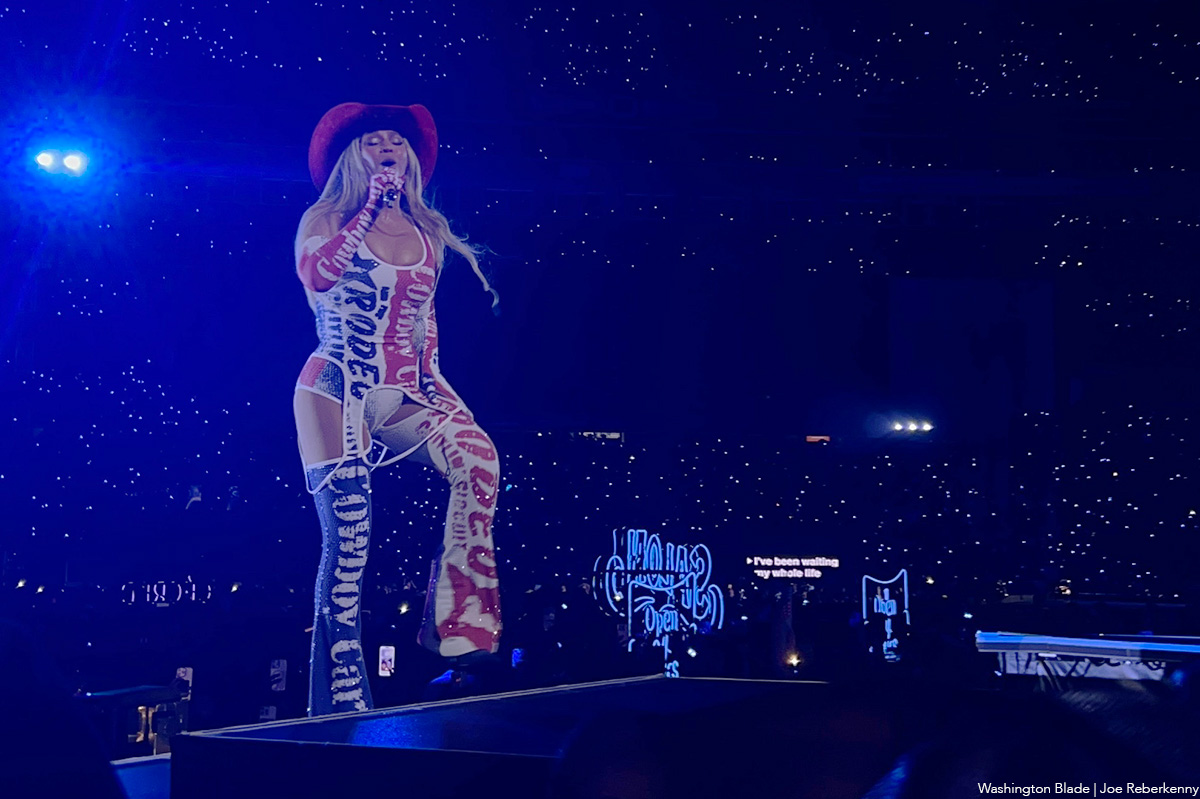
Just in time for Independence Day, Beyoncé lit up Landover’s Commanders Field (formerly FedEx Field) with fireworks and fiery patriotism, bringing her deeply moving and genre-defying “Cowboy Carter” tour to the Washington, D.C. area.
The tour, which takes the global icon across nine cities in support of her chart-topping and Grammy-winning country album “Cowboy Carter,” landed in Prince George’s County, Maryland, over the Fourth of July weekend. From the moment Beyoncé stepped on stage, it was clear this was more than just a concert — it was a reclamation.
Drawing from classic Americana, sharp political commentary, and a reimagined vision of country music, the show served as a powerful reminder of how Black Americans — especially Black women — have long been overlooked in spaces they helped create. “Cowboy Carter” released in March 2024, is the second act in Beyoncé’s genre-traversing trilogy. With it, she became the first Black woman to win a Grammy for Best Country Album and also took home the coveted Album of the Year.
The record examines the Black American experience through the lens of country music, grappling with the tension between the mythology of the American Dream and the lived realities of those historically excluded from it. That theme comes alive in the show’s opening number, “American Requiem,” where Beyoncé sings:
“Said I wouldn’t saddle up, but
If that ain’t country, tell me, what is?
Plant my bare feet on solid ground for years
They don’t, don’t know how hard I had to fight for this
When I sing my song…”
Throughout the performance, Beyoncé incorporated arresting visuals: Black cowboys on horseback, vintage American iconography, and Fox News clips criticizing her genre shift — all woven together with voiceovers from country legends like Dolly Parton and Willie Nelson. The result was a multimedia masterclass in storytelling and subversion.
The “Cowboy Carter” tour has been a social media sensation for weeks, with fans scrambling for tickets, curating elaborate “cowboy couture” outfits, and tailgating under the summer sun. At Commanders Field, thousands waited in long lines for exclusive merch and even longer ones to enter the stadium — a pilgrimage that, for many, felt more like attending church than a concert.
One group out in full force for the concert was Black queer men — some rocking “denim on denim on denim on denim,” while others opted for more polished Cowboy Couture looks. The celebration of Black identity within Americana was ever-present, making the concert feel like the world’s biggest gay country-western club.
A standout moment of the night was the appearance of Beyoncé’s 13-year-old daughter, Blue Ivy Carter. Commanding the stage with poise and power, she matched the intensity and choreography of her mother and the professional dancers — a remarkable feat for someone her age and a clear sign that the Carter legacy continues to shine.
It’s been nearly two decades since Beyoncé and Destiny’s Child parted ways, and since then, she’s more than lived up to her title as the voice of a generation. With “Cowboy Carter,” she’s not just making music — she’s rewriting history and reclaiming the space Black artists have always deserved in the country canon.
-

 Federal Government2 days ago
Federal Government2 days agoTreasury Department has a gay secretary but LGBTQ staff are under siege
-

 Virginia3 days ago
Virginia3 days agoDefying trends, new LGBTQ center opens in rural Winchester, Va.
-

 District of Columbia2 days ago
District of Columbia2 days agoGay GOP group hosts Ernst, 3 House members — all of whom oppose Equality Act
-

 Opinions4 days ago
Opinions4 days agoUSAID’s demise: America’s global betrayal of trust with LGBTQ people

